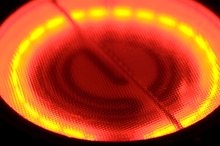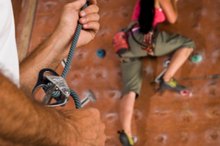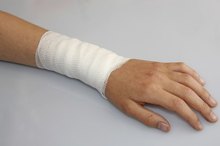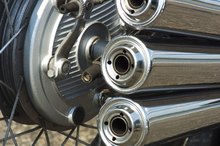How to Treat a Burn on a Forearm
Burning your forearm can occur while cooking, ironing or lighting a fire. Treating minor burns with first aid is usually an effective method of healing them 1. However, a more severe burn requires medical treatment. According to MayoClinic.com, there are three classifications of burns 1.
A first-degree burn involves the top layers of skin and results in pain and redness. A second-degree burn goes deeper into the skin and results in blisters.
A third-degree burn is the most serious and can often involve muscle and bone. This type of burn will appear charred, and if you or someone else suffers one, call 911 immediately. Treating a burned forearm can help alleviate the pain and heal the burned skin.
Minor Burn
Cool the affected area. Use cool but not cold water and allow it to run over your burn for several minutes until the pain is reduced. You can also put your forearm into a sink or large bowl full of cool water or use cool washcloths. Do not use ice on a burn, which can damage the area.
How to Treat a Burn From Kitchen Oil
Learn More
Cover the burn with gauze. Apply a gauze bandage loosely on your forearm. Don't wrap it too tightly because it will put pressure on the burn, causing pain. Don't use any ointment because doing so can lead to an infection. Change the bandage as needed. The burn should heal on its own, but if you are concerned, call your doctor for an evaluation.
Take a dose of pain medication. Use an over-the-counter variety such as Tylenol or ibuprofen to help alleviate the pain as your burned forearm heals. Follow package instructions to determine the correct dosage.
- Use cool but not cold water and allow it to run over your burn for several minutes until the pain is reduced.
- Don't wrap it too tightly because it will put pressure on the burn, causing pain.
Major Burn
How to Treat a Burn Bubble
Learn More
Call 911. Any major burn requires prompt medical attention. Call for medical help right away.
Do not try to remove your clothing. If you were wearing long sleeves when your forearm was burned, leave the sleeve in place.
Refrain from putting the burn in water. This can cause your body temperature to drop, resulting in hypothermia. It can also lead to blood pressure problems and shock.
Elevate your forearm. Raise it above your heart to aid circulation in the burned area. Keep your forearm away from anything that can cause pressure while you are doing this.
Cover the burn. Use a cool, moist cloth to cover the burn while you wait for paramedics. Use a gauze bandage or a towel.
Tips
Children under 2 should not take over-the-counter pain medications without the recommendation of a pediatrician.
Put sunscreen on a healed burn because it is more susceptible to a sunburn.
Warnings
If you are with someone else who has a severe burn on his forearm, monitor his vital signs while you wait for medical help. Administer CPR if he stops breathing.
If your burned forearm forms blisters, don't break them. Doing so puts you at risk of an infection.
- Any major burn requires prompt medical attention.
- Use a cool, moist cloth to cover the burn while you wait for paramedics.
Related Articles
References
- MayoClinic.com: Burns: First Aid
- Medline Plus: Burns
- Cuttle L, Pearn J, McMillan JR, Kimble RM. A review of first aid treatments for burn injuries. Burns. 2009;35(6):768-775. doi:10.1016/j.burns.2008.10.011
- Lloyd ECO, Rodgers BC, Michener M, Williams MS. Outpatient burns: prevention and care. Am Fam Physician. 2012;85(1):25-32.
- Shrivastava P, Goel A. Pre-hospital care in burn injury. Indian J Plast Surg. 2010;43(Suppl):S15-S22. doi:10.4103/0970-0358.70720
- Nielson CB, Duethman NC, Howard JM, Moncure M, Wood JG. Burns: Pathophysiology of Systemic Complications and Current Management. J Burn Care Res. 2017;38(1):e469-e481. doi:10.1097/BCR.0000000000000355
- Schaefer TJ, Tannan SC. Thermal Burns. In: StatPearls. Treasure Island, FL: StatPearls Publishing; 2019.
- Cancio LC, Barillo DJ, Kearns RD, et al. Guidelines for Burn Care Under Austere Conditions: Surgical and Nonsurgical Wound Management. J Burn Care Res. 2017;38(4):203-214. doi:10.1097/BCR.0000000000000368
- Lloyd ECO, Rodgers BC, Michener M, Williams MS. Outpatient burns: prevention and care. Am Fam Physician. 2012;85(1):25-32.
- Munteanu A, Florescu IP, Nitescu C. A modern method of treatment: The role of silver dressings in promoting healing and preventing pathological scarring in patients with burn wounds. J Med Life. 2016;9(3):306-315.
Writer Bio
Eliza Martinez has written for print and online publications. She covers a variety of topics, including parenting, nutrition, mental health, gardening, food and crafts. Martinez holds a master's degree in psychology.







